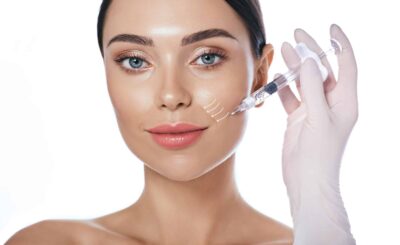In the pursuit of a brighter, more radiant complexion, many turn to skin whitening treatments as a solution. While the quest for flawless skin can often lead to a maze of products and regimens, it’s crucial to focus on safe, effective methods that prioritize skin health above all. This comprehensive guide dives into the heart of skin whitening, offering a deep dive into trusted techniques, cutting-edge innovations, and key lifestyle adjustments that can illuminate your skin from within.
Understanding Skin Whitening
Skin whitening, a process aimed at lightening complexion and reducing pigmentation, has gained significant attention globally. By targeting melanin production in the skin, these methods promise a more uniform skin tone, tackling concerns such as dark spots, melasma, and overall skin dullness. However, the path to luminous skin is not without its challenges. Prioritizing safety and efficacy is essential to avoid potential risks and achieve desired results without compromise.
Topical Treatments: The First Line of Defense
Natural Extracts for Gentle Brightening
Harnessing the power of nature, several botanical extracts have emerged as potent allies in skin whitening. Licorice root extract, known for its glabridin content, inhibits melanin production, effectively fading dark spots without harsh side effects. Similarly, kojic acid, derived from fungi, offers a natural solution to hyperpigmentation, making it a staple in skin brightening routines.
Vitamin C: The Brightening Powerhouse
As a renowned antioxidant, Vitamin C not only protects the skin from environmental aggressors but also plays a pivotal role in skin whitening. By inhibiting the enzyme tyrosinase, Vitamin C prevents melanin formation, resulting in a visibly brighter and more even complexion. Incorporating Vitamin C serums into daily skincare routines can transform the skin, revealing a glow that radiates health and vitality.
Niacinamide: Beyond Brightening
Niacinamide, or Vitamin B3, offers multifaceted benefits for the skin, including moisture retention, reduced redness, and improved skin texture. Its ability to regulate melanin production places niacinamide among the top contenders for effective skin whitening. By reinforcing the skin’s barrier and evening out skin tone, niacinamide paves the way for a luminous, rejuvenated complexion.
Advanced Treatments: Elevating Skin Whitening
Chemical Peels: Precision Exfoliation
Chemical peels, utilizing AHAs and BHAs, offer a targeted approach to skin whitening. By removing dead skin cells and promoting cell renewal, chemical peels can dramatically improve skin texture and tone. Options range from gentle lactic acid peels to more intensive glycolic acid treatments, allowing for personalized regimens that cater to individual skin sensitivities and goals.
Microdermabrasion: The Gentle Resurfacer
Microdermabrasion stands out as a non-invasive treatment that revitalizes dull, uneven skin. This mechanical exfoliation method gently buffs away the outer layer of the skin, encouraging new, lighter skin cells to surface. Regular sessions can significantly enhance skin brightness, making microdermabrasion a sought-after option for those aiming for a subtle, yet effective, approach to skin whitening.
Laser Therapy: Precision Lightening
Laser treatments offer a high-tech solution to skin whitening, targeting melanin clusters deep within the skin without harming the surrounding tissue. By breaking down pigmentations, laser therapy can significantly reduce the appearance of dark spots and melasma, leading to a more uniform skin tone. While laser treatments require professional supervision, their precision and effectiveness make them a popular choice for skin whitening.
Lifestyle Adjustments: Supporting Skin Health
Sun Protection: The Essential Habit
No skin whitening regimen is complete without diligent sun protection. UV exposure not only darkens the skin but also reverses the effects of whitening treatments. Broad-spectrum sunscreens, protective clothing, and avoiding peak sun hours are fundamental practices to safeguard the skin and maintain the results of skin whitening efforts.
Dietary Choices: Nourishing from Within
A diet rich in antioxidants can profoundly impact skin health. Foods high in Vitamins A, C, and E, alongside minerals like selenium and zinc, can fortify the skin against oxidative stress, improving overall skin luminosity. Hydration, too, plays a crucial role in maintaining skin elasticity and brightness, making water intake essential for a radiant complexion.
Consistent Skincare Routine: The Foundation of Radiance
A consistent, well-curated skincare routine lays the foundation for successful skin whitening. Cleansing, moisturizing, and targeted treatments work synergistically to enhance skin health, allowing whitening products to penetrate more effectively and yield visible results. Patience and perseverance are key, as the journey to a brighter complexion unfolds over time.
Conclusion
Skin whitening is a multifaceted endeavor that extends beyond the surface, encapsulating a holistic approach to skincare. By combining topical treatments, advanced procedures, and lifestyle adjustments, achieving a brighter, more even complexion becomes an attainable goal. However, the essence of skin whitening lies in its safe practice, emphasizing the importance of informed choices, professional guidance, and a commitment to nurturing skin health. As we embrace these principles, the path to radiant, luminous skin illuminates, marked by safety, efficacy, and the true beauty of well-cared-for skin.








